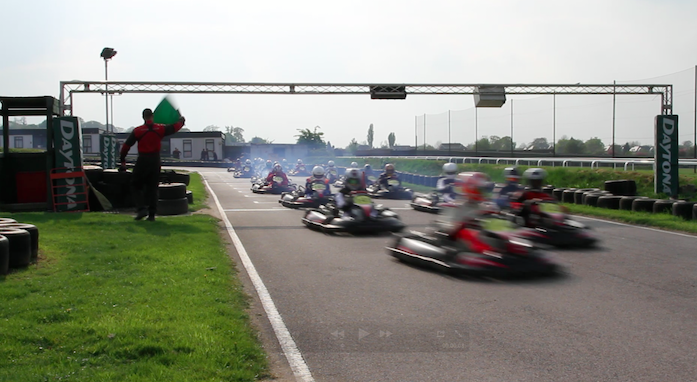Petrol… You purchase 100’s of 1000’s of litres a year from the same supplier you put it in the karts and forget about it. Right? Wrong!
 During the latter part of 2009, I received reports from our Sandown Park circuit that karts were stalling too frequently, performance was down and there was a lot of carbon build up in the inlet tract of the engines. Now, we use EXACLTY the same fuel at Milton Keynes as we do at Sandown; it’s shipped from our huge tank at MK in large barrels down to Sandown. At MK, we saw few of the problems that SP were experiencing so it didn’t immediately flag up fuel as an issue. However, after considerable research, I found out some interesting stuff. My initial thoughts were that we were buying ‘clean’ fuel without any additives.
During the latter part of 2009, I received reports from our Sandown Park circuit that karts were stalling too frequently, performance was down and there was a lot of carbon build up in the inlet tract of the engines. Now, we use EXACLTY the same fuel at Milton Keynes as we do at Sandown; it’s shipped from our huge tank at MK in large barrels down to Sandown. At MK, we saw few of the problems that SP were experiencing so it didn’t immediately flag up fuel as an issue. However, after considerable research, I found out some interesting stuff. My initial thoughts were that we were buying ‘clean’ fuel without any additives.
Without the small amount of detergents and other highly complicated chemicals present in all forecourt bought petrol, I thought this might be giving us all the carbon build up, dirty inlet valves etc. I was wrong.
As Brussels is wont to do, they issued a new EU directive a few years ago that stated that all pump gasoline should have at least 5% renewable fuel content by the end of 2010. This renewable fuel is Ethanol. Now, ethanol is lovely stuff, in fact, every time you have a beer or a glass of wine or a Bacardi Breezer, you are drinking an amount of ethanol.
However, ethanol is hygroscopic and when added to a fuel tank that has water present, it mixes with the water, forms a sludge and drops to the bottom of the tank. This would be bad enough except as the ethanol mixes with the water, it draws out some of the octane from the fuel. What you are left with is a water/ethanol sludge at the bottom of the tank and octane deficient fuel floating on top. Not the best for running any kind of engine on. This was the cause of the problems. Once I had established this as the issue, fixing it was actually really easy. A company came to our MK venue with a van and a load of intricate kit. They succeeded in sucking out dozens of litres of sludge and water from the bottom of the 22,000 litre underground tank and then proceeded to ‘polish’ the remaining fuel. This is basically an extreme filtering process which over the course of a few hours takes all the fuel from the tank and puts it through various filters, magnets and clever bits of kit to leave you with pristine, fresh, lovely fuel. The smallest filter the fuel goes through is just 3 microns!
I wanted to test the ‘new’ fuel immediately and on a back to back test found an improvement of half a second a lap straight away. Success!
Having been through this and scratched my head over the issue for some considerable time, it occurred to me that many of us must have water in our own cars fuel tanks and would be completely unaware of the problems it might cause. So I recommend the use of a fuel tank additive such as Wynns Dry Fuel that binds with the water molecules and allows it to be burnt through the engine. This only needs to be done once every 6 months or so and you might find it improves the performance of your vehicle.
And let’s be honest, who doesn’t want better performance? We at Daytona do, and that’s why we’re constantly striving to bring you the best karts on the best tracks at the best venues in Britain.
Richard Brunning
Group Technical Director

